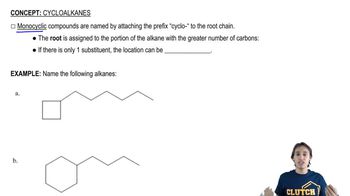Textbook Question
Give the IUPAC names of the following compounds.
(c) (CH3)2C=CHCOOH
(d)
 Verified step by step guidance
Verified step by step guidance Verified video answer for a similar problem:
Verified video answer for a similar problem:



 4:20m
4:20mMaster Carboxylic Acids Nomenclature with a bite sized video explanation from Johnny
Start learning